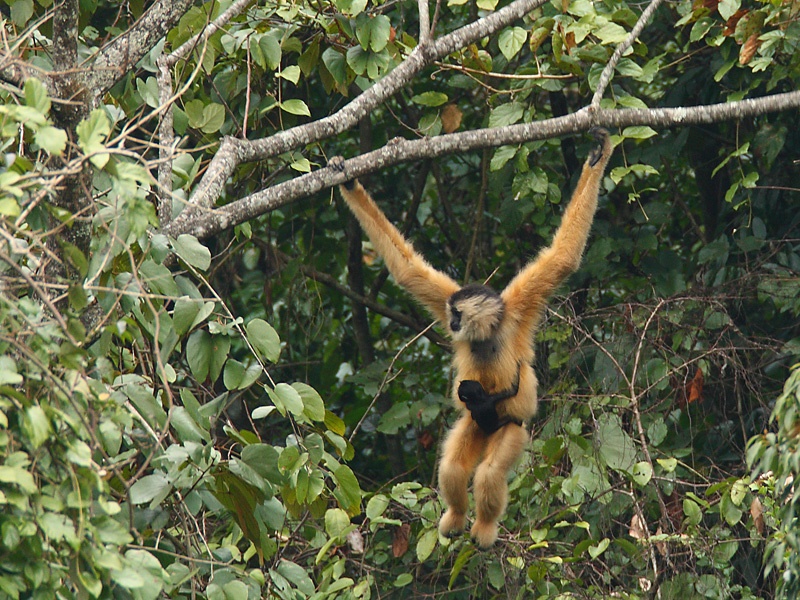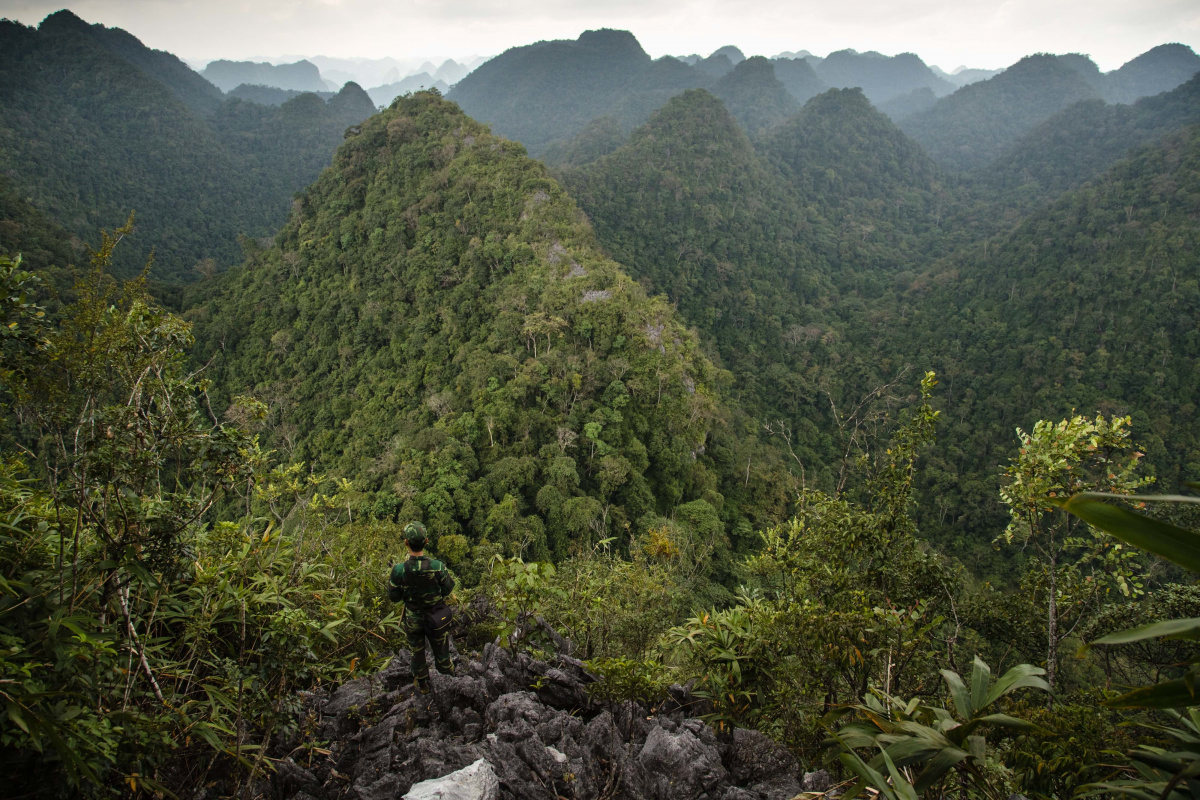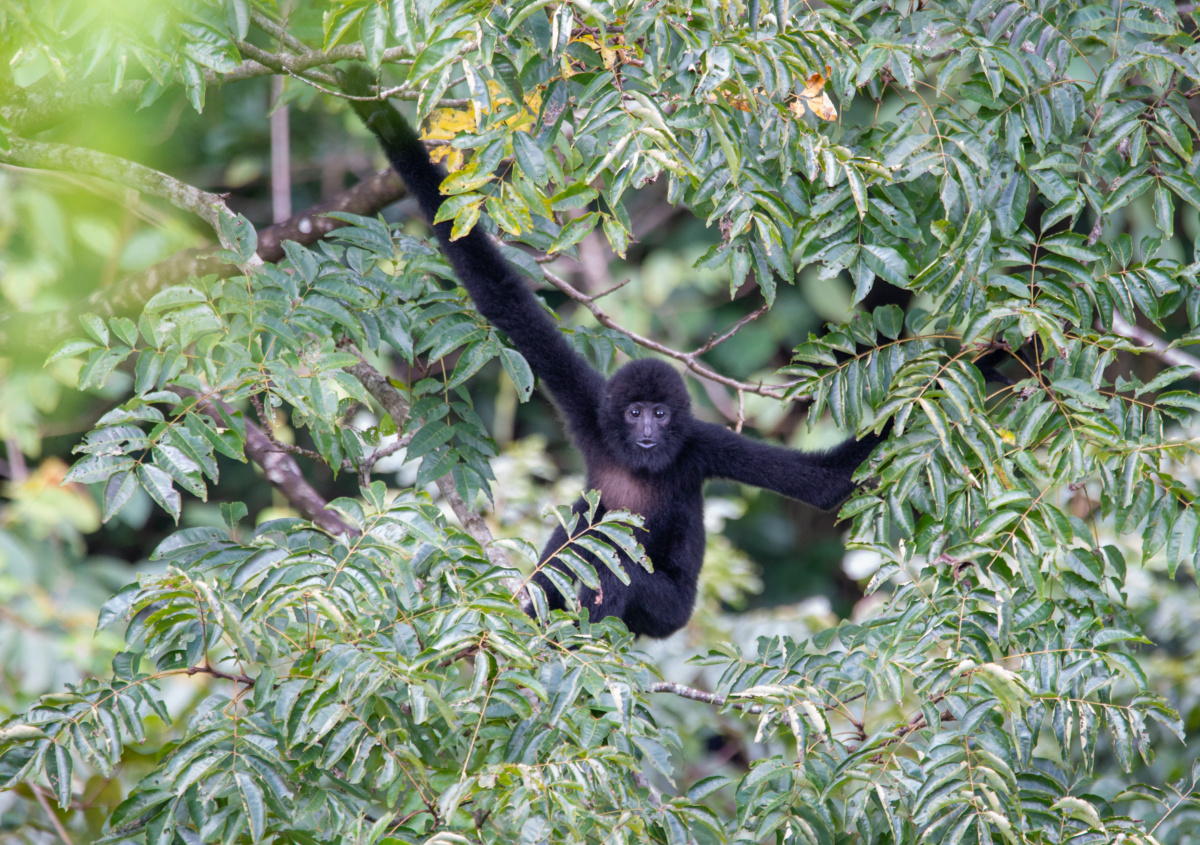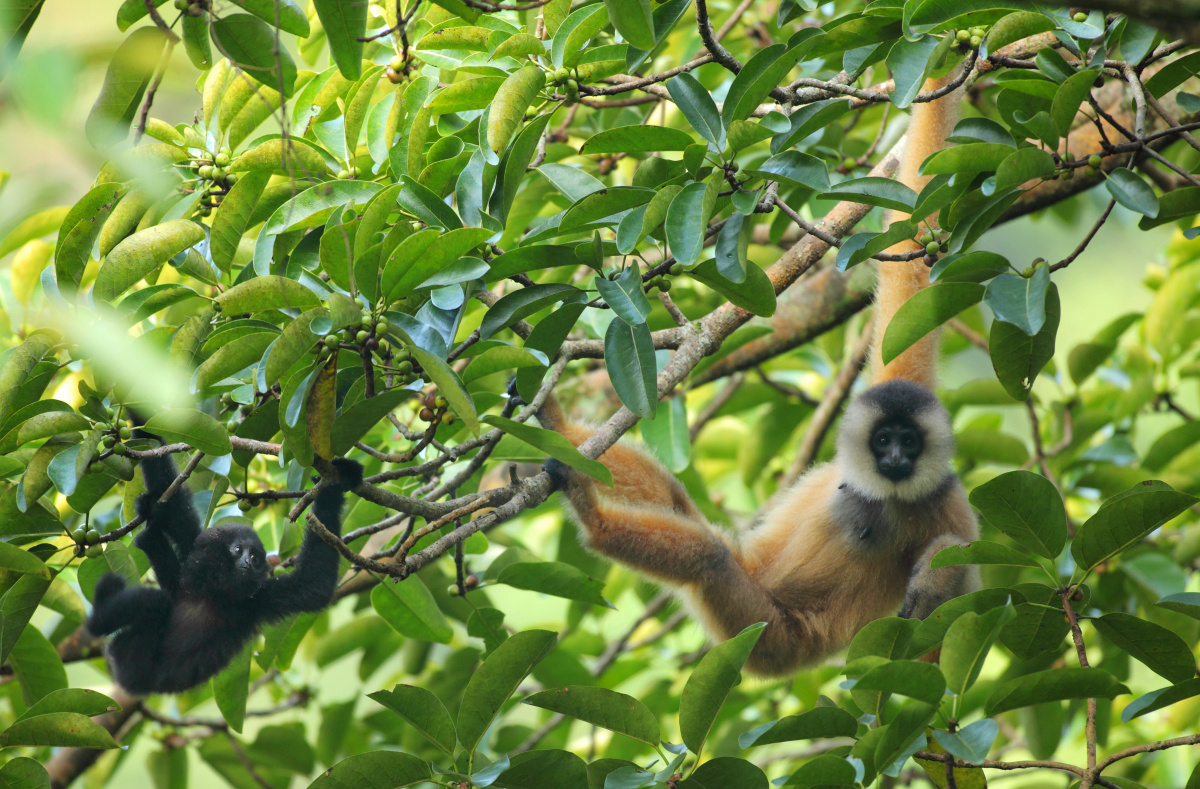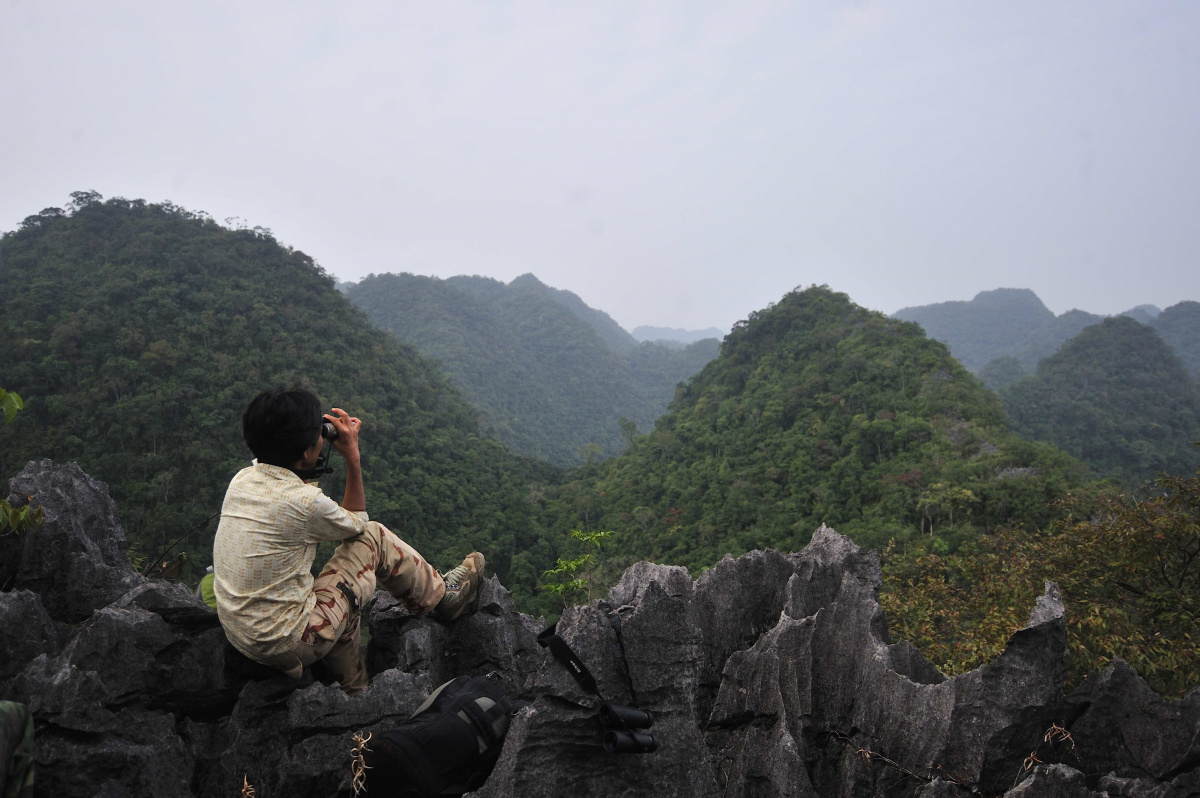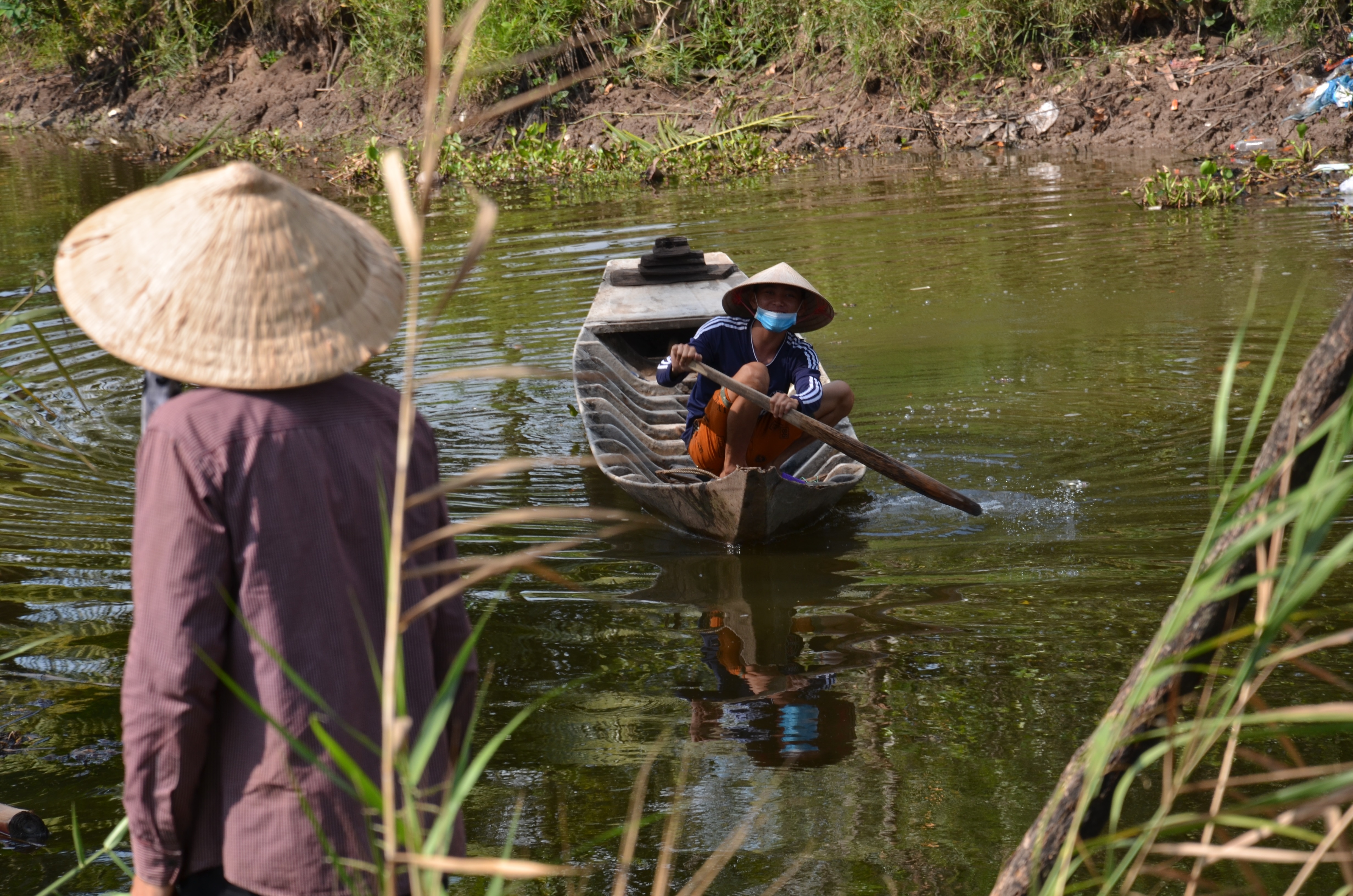Neglected species – Sending out an SOS for a vanishingly rare primate
Gibbons are great apes. There. We’ve said it. The purists may pooh-pooh the idea, but ours isn’t a scientific definition. These so-called lesser apes may not officially rank alongside the big guns of the primate world, but in their own inimitable way, they are just as charismatic and characterful as the gorillas, chimpanzees, and orang-utans that have had greatness thrust upon them. Many are also Critically Endangered, including the cao vit gibbon.
Also known as the eastern black crested gibbon, this relatively unfamiliar ape is one of the rarest primates in the world, but that precarious position is a marked improvement on its apparent status a mere two decades ago. Until it was rediscovered by scientists from Fauna & Flora International (FFI) in 2002, the cao vit gibbon was presumed to be extinct. Today, the entire world population is clinging to survival by its hooked fingertips in a small, fragmented forest on the border between Vietnam and China.
CV highlights
Like all gibbons, the species is an astounding acrobat. It is superbly adapted to its treetop habitat, capable of careering through the forest canopy at breakneck speed by means of its long, lithe limbs. For good measure, it can also move on two legs, balancing on boughs at vertiginous heights like some fearless, furry high-wire walker.
The adults differ markedly in colour. Males are all black, while females are buff-yellow with a conspicuous black face mask and black crest. For youngsters, it’s more complicated; all cao vit gibbons are born black, but females gradually assume their mother’s fur colour, whereas males remain black. As a rule of thumb, if he’s a fella, he doesn’t turn 'yella.'
Songs for swingin’ lovers
The cao vit gibbon is named onomatopoeically – like the cuckoo – after its distinctive call. Gibbons tend to pair for life and defend their territories mainly by singing. The delightful dawn duets between male and female are one of the most evocative sounds of the forest. Listen for yourself here:
Hunted and hemmed in
In common with all the world’s gibbon species, the cao vit gibbon is threatened with extinction, but it is closer to the brink than almost any other primate. The main threats to its survival are all too familiar; hunting has historically taken a heavy toll, but the destruction and degradation of its dwindling habitat has also seriously undermined its long-term survival prospects. Firewood and NTFP collection and other forms of encroachment have inexorably nibbled at the edges of the gibbon’s final refuge, bringing the animals into increasingly close contact with humans and, in turn, making them more vulnerable to poaching.
Gibbon SOS
Since rediscovering the cao vit gibbon, FFI has been working with local partners to set up community-based patrol groups, secure formal protection for crucial gibbon habitat and reduce threats in the buffer zones that surround this protected area. Support from IUCN Save Our Species’ SOS Gibbons initiative has been crucial to these conservation efforts.
In the past year, conservation messages emphasising the importance and urgency of protecting the cao vit gibbon have been distributed in various forms, while a ‘junior ranger’ initiative rolled out in local secondary schools has taught students about cao vit gibbons and forest diversity. A recent festival to showcase cao vit gibbon conservation was attended by over 450 community members from the buffer zones around the protected area.
Conservation teams comprising members of the local community have been equipped and trained to monitor the gibbon population and patrol the forest, providing vital data and a visible deterrent against poaching and other illegal activities. Pilot projects designed to reduce forest degradation by promoting sustainable livelihoods – initially through livestock husbandry and the establishment of fruit-tree nurseries – have already yielded promising results.
Giant leap
Thanks to the combined efforts of FFI and our partners, hunting and habitat loss in the demarcated conservation area have been virtually eliminated. As a result, cao vit gibbon numbers have rebounded and are now believed to have stabilised at an estimated 135 individuals, more than double the population at the time of its rediscovery some 20 years ago.
The 1,600-hectare area to which these gibbons are currently confined is thought to have reached carrying capacity – in other words, there is no more room for additional territories within this landscape. A proposal to expand the protected area has received support from local communities after consultation with villagers in the four neighbouring communes. If approved, this would safeguard a further 4,300 hectares of habitat, bringing the total area under formal protection to almost 6,000 hectares.
Gazing to the future
In March 2021, FFI helped convene an international workshop to develop a ten-year conservation action plan and a 30-year vision for the cao vit gibbon. Bringing together government representatives, protected area managers and primate experts from Vietnam, China and beyond, the event provided an opportunity to reflect on past success in bringing the species back from the brink. More importantly, it has set the cao vit gibbon on the long and winding road to recovery by promoting increased transboundary collaboration and exploring the feasibility of establishing a second population in the wild.
The cao vit gibbon is still in need of intensive care, but we look forward to the day when this endearing ape is no longer on the critical list. With ongoing support from IUCN Save Our Species, FFI is working to turn this collective vision into a reality.
